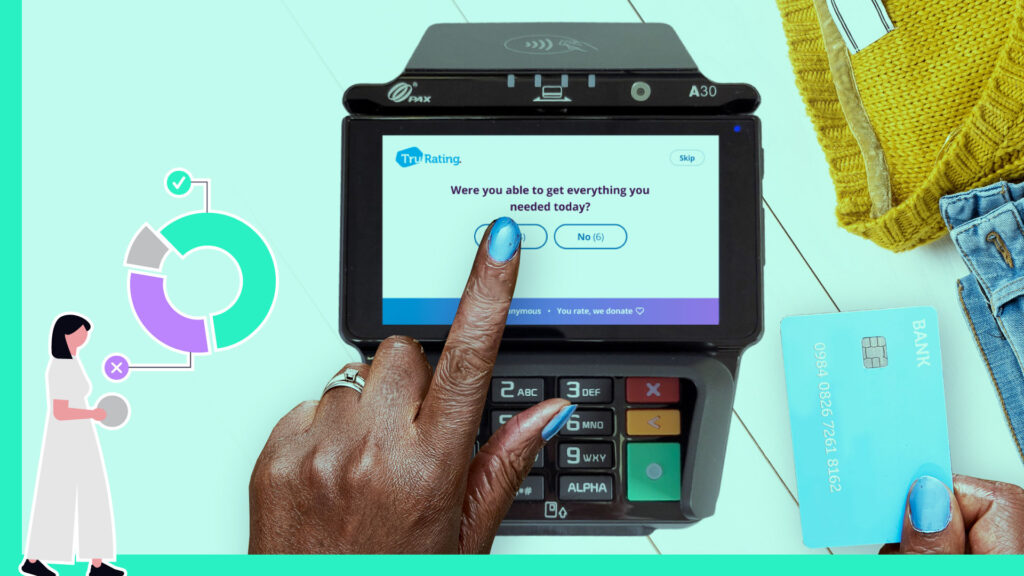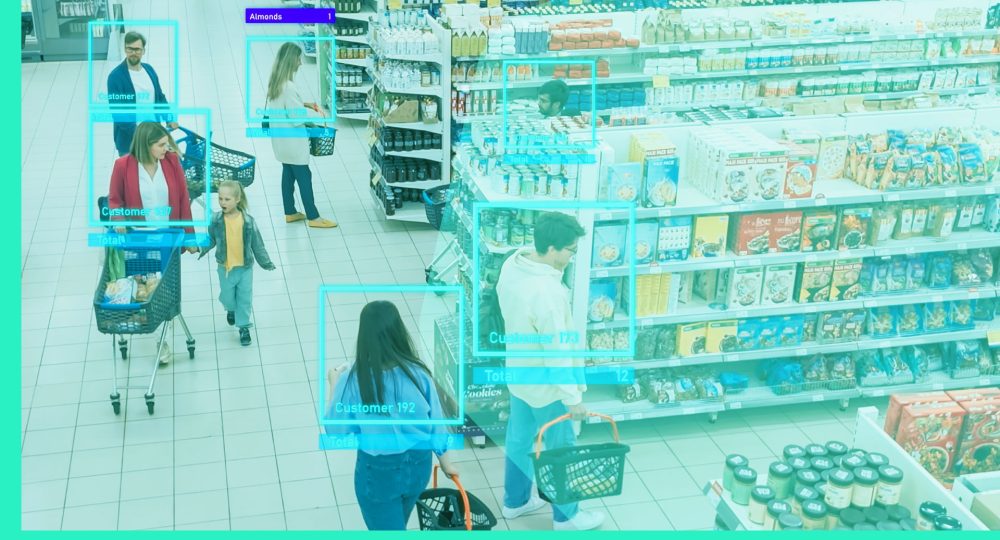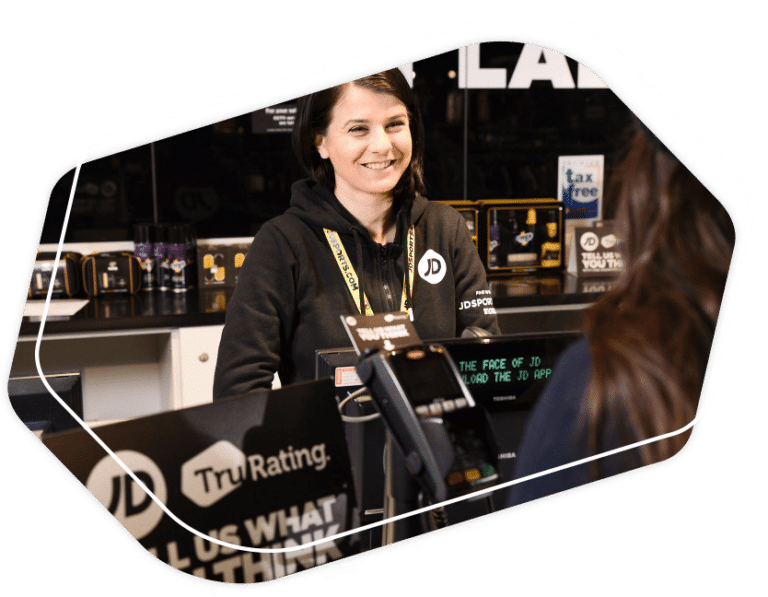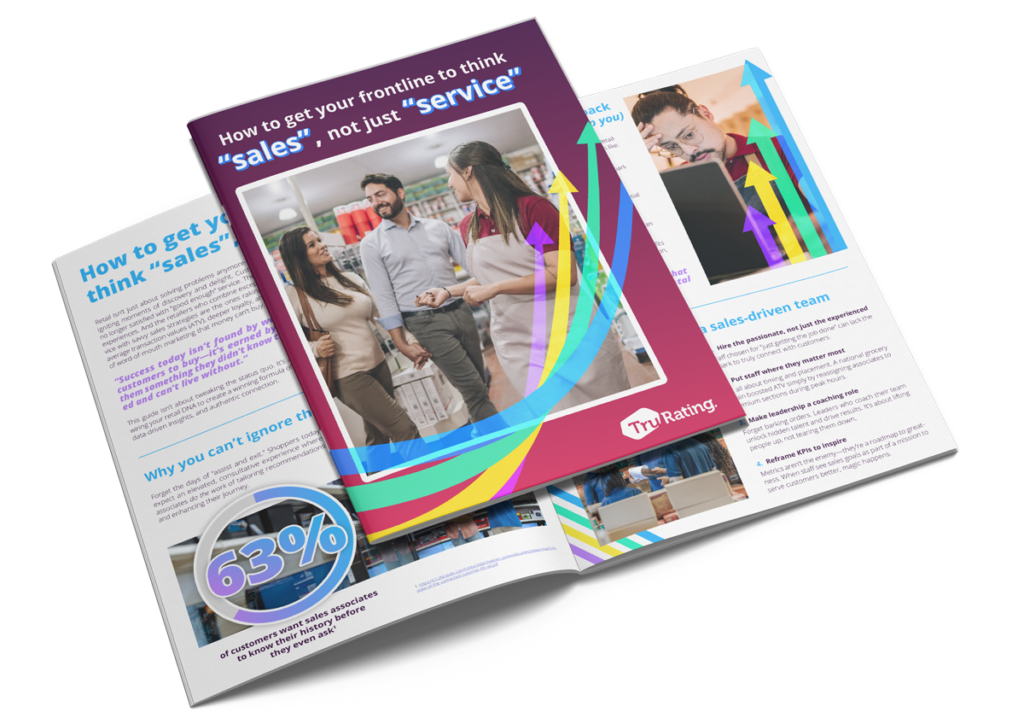
Real-time feedback and real-time customer experience tracking are quickly becoming the defining measures of modern retail. Starbucks’ recent decision to close underperforming stores and cut 900 non-retail jobs shows how quickly performance gaps can force painful, public course corrections. Even when the strategy is sound, if customer expectations aren’t met in the moment, financial results suffer. Not having a real-time view of early warning indicators at each location can significantly affect your P&L later on.
At the same time, research confirms the upside of getting customer experience right. Returning customers spend 67% more than new customers, making loyalty the most profitable growth lever a retailer has. But loyalty doesn’t come from quarterly survey results. It comes from consistently delivering experiences that meet or exceed expectations and detecting risks early before customers silently churn.
In this article, we’ll explore exactly what real-time feedback means in a retail context, why it’s so important for today’s retail teams, and how it differs from traditional post-purchase surveys. We’ll examine the benefits of real-time customer experience tracking, from uncovering invisible friction to driving higher ATV and conversion. You’ll also see how real-time analytics enable precision coaching and how real-time feedback loops fuel continuous improvement.
What is real-time feedback
Real-time feedback is the practice of capturing, analyzing, and acting on customer responses as close to the point of interaction as possible, ideally during or immediately after the transaction. Unlike post-purchase surveys that rely on memory, bias, or selective sampling, real-time customer feedback systems provide a direct, in-the-moment feedback loop.
This allows retail teams to:
- Capture customer feedback in real-time directly at checkout or digital touchpoints
- Measure customer experience in real-time across shifts, stores, or dayparts
- Build a foundation for continuous improvement feedback and decision-making
Instead of waiting weeks for lagging survey results, real-time feedback enables leaders to coach tomorrow’s shift with today’s data, or digital teams to optimize faster.
Why is real-time feedback important in retail?
For retailers, execution is everything. A great strategy can collapse if frontline delivery falls short. That’s why real-time performance feedback is critical for both CX and operations teams. Key reasons include:
- Detecting risk early – by surfacing real-time customer sentiment, brands can spot store-level or regional breakdowns before they impact loyalty.
- Coaching more effectively – with real-time store training for customer experience, managers can target specific behaviors (e.g., greeting, recommending add-ons) that influence conversion.
- Protecting loyalty – customers rarely complain. They simply leave. Continuous customer monitoring ensures the CX team can catch silent churn before it erodes CLV.
Without real-time visibility, brands operate reactively, fixing issues after revenue is already lost. With it, they can lead proactively.
Benefits of real-time feedback
The benefits of real-time feedback extend far beyond traditional customer satisfaction metrics. For retail teams, its value lies in turning customer sentiment into real-time performance feedback that drives measurable business outcomes. Here’s how:
1. Revenue growth through behavior-linked insights
One of the most powerful advantages of capturing customer feedback in real-time is being able to connect frontline behaviors directly to revenue. For example, our research from over a billion customer ratings shows that when staff offer three product options instead of one, ATV can jump by more than 30%. Unlike traditional VoC, which measures sentiment after the fact, real-time point-of-sale feedback provides live customer insights into which behaviors are actually moving the needle.
2. Execution consistency across every store and shift
In multi-location retail, inconsistency is one of the biggest risks to brand trust. A store that delivers a warm welcome in the morning may fall short by the evening shift. With real-time customer experience tracking, you can gain visibility into execution by store, region, and daypart. This ensures continuous customer monitoring that identifies where service breakdowns are happening, before they spread and damage the brand.
3. Faster response and reduced risk
Traditional survey systems leave brands blind for weeks. By the time a promoter score dip is spotted, customers may already have churned. A real-time customer feedback solution provides an instant feedback system that surfaces issues immediately, whether it’s slow checkout, product availability, or a disengaged associate. This allows you to act in hours, not months, reducing the cost of recovery and protecting loyalty.
4. Stronger customer loyalty and lifetime value
Loyalty doesn’t come from one-off moments of delight; it comes from consistent delivery across every visit. Real-time experience tracking enables you to build a customer journey feedback loop that strengthens retention by addressing small friction points before they become silent churn. In other words, it keeps recurring customers happy, loyal, and spending more.
5. Cross-functional alignment and ROI proof
CX teams often struggle to prove their impact on the P&L. Real-time systems change that by linking customer analytics to conversion, ATV, and repeat visits. This empowers you to show executives not just how customers feel, but how those feelings and behaviors translate into measurable revenue outcomes. It also aligns operations, strategy, and finance around one real-time customer experience signal, eliminating the finger-pointing when initiatives stall.
6. Building a culture of continuous improvement
Finally, real-time feedback establishes a cadence of continuous improvement feedback that reinforces positive behaviors shift by shift. With each cycle of the real-time feedback loop, managers gain clearer visibility, teams receive more targeted coaching, and stores deliver more consistent experiences. Over time, these small adjustments compound, creating a culture where improvement is constant and measurable.
Real-time feedback vs. post-purchase surveys
Most retailers still rely heavily on post-purchase surveys, e.g emails sent days later, loyalty app prompts, or quarterly satisfaction score requests. While these tools provide sentiment snapshots, they come with major flaws:
- Delayed signal – by the time feedback is received, the opportunity to act has passed
- Low volume – response rates are typically under 10%, creating sample bias
- Mostly hear from the vocal minority – the angriest or happiest customers are overrepresented, while the everyday customer (the silent majority) goes unheard
- Aggregated view – results are often rolled up to brand or category level, not tied to specific stores, shifts, or staff
- Memory bias – customers may not recall the details of their interaction accurately, especially if asked days later
The result? Brands get a broad sense of customer satisfaction but lack the precision to diagnose and fix execution issues in real-time.
By contrast, real-time customer experience tracking is designed for immediacy and action. A real-time customer feedback solution collects in-the-moment feedback at the point of interaction. This creates an instant feedback system that connects directly to performance, transaction data, and behavior. Consider the difference:
- A post-purchase survey might tell you that “customers are less satisfied with checkout.”
- A real-time feedback system can pinpoint that evening shifts in Store 208 skip greetings, which is directly linked to a drop in ATV during those hours.
This is why real-time performance feedback is transformational. It moves beyond sentiment and into operational truth. Instead of waiting weeks for a quarterly review, CX teams can close the loop shift by shift. Ops leaders can coach in real-time. And executives can see the ROI of CX initiatives as they unfold, not after they’ve already failed to scale. In short:
- Post-purchase tools explain the past
- Real-time customer engagement shapes the present (and protects the future)
How to improve customer experiences with real-time analytics
Real-time customer analytics make customer experience measurable, coachable, and scalable. For retail teams, the goal isn’t just to collect data, it’s to know which insights matter most and how to act on them quickly. That’s where solutions like TruHub, come into play.
TruHub is designed to cut through the noise of day-to-day reporting and highlight the single biggest opportunity for improvement in your business right now. By combining real-time customer feedback with built-in sales data, it transforms raw sentiment into actionable, ROI-backed intelligence.
With real-time analytics, team can:
- Isolate friction points – was the conversion drop caused by staffing gaps, confusing signage, or missed upsell behaviors? TruHub’s heatmaps allow leaders to see weak spots at daily, shift, or even hourly levels.
- Measure ROI with precision – by tying customer feedback directly to transaction data, leaders can prove the impact of frontline behaviors on ATV, conversion, and repeat visits—helping secure executive buy-in.
- Enable coaching at scale – instead of overwhelming managers with dashboards, TruHub allows organizations to build role-specific views. Store managers see granular store-level feedback; regional leaders can compare performance across multiple stores; CX teams get a unified customer journey view.
This is how real-time experience tracking shifts from being a passive data exercise into an active driver of performance. By making insights accessible across the organization, TruHub enables CX leaders, ops, and marketing to share a common view of the customer journey and focus on the opportunities that will have the biggest impact today.
The real-time feedback loop
A real-time feedback loop is the closed cycle of capturing, analyzing, and acting on customer insights in hours, not weeks. It ensures that feedback doesn’t just sit in dashboards but flows straight into operational execution.
In retail, this matters because performance isn’t static. It varies by store, by shift, even by hour of the day. Without a fast loop, friction goes undetected and revenue quietly leaks away. A strong customer journey feedback loop typically includes five steps:
- Capture point-of-sale feedback – customers provide simple, in-the-moment feedback at checkout or digital touchpoints, avoiding survey fatigue.
- Connect feedback to outcomes – responses are linked to sales data, enabling real-time customer analytics that show which behaviors (e.g., offering three options, greeting, loyalty sign-up) impact ATV, conversion, and repeat visits.
- Identify patterns quickly – heatmaps and real-time experience tracking highlight where execution is breaking down—by region, store, shift, or daypart.
- Act with targeted coaching – regional managers and store leaders use this real-time performance feedback to guide teams on what to fix, reinforce, or replicate.
- Validate and repeat – improvements are tracked immediately, creating a visible cycle of recognition, motivation, and continuous improvement feedback.
The real-time loop is about closing the gap between insight and action. For operations, it’s about coaching with confidence instead of guesswork. For regional leaders, it provides live customer insights into which stores need intervention and which deserve recognition.
Over time, these loops build a culture of accountability and learning. Small, rapid adjustments, like fixing a checkout bottleneck or reinforcing a service behavior, compound into measurable business impact. Instead of reacting to quarterly survey reports, brands shift to continuous customer monitoring, where feedback fuels a living, breathing system of improvement.
Real-time feedback coaching
Capturing data is only half the equation. The real value comes when insights are translated into targeted action on the shop floor. That’s where real-time feedback coaching comes in.
Unlike traditional training programs, which often deliver generic scripts or quarterly refreshers, real-time coaching gives managers actionable, store-specific guidance every week. Instead of wondering where to focus, leaders receive a clear playbook of the behaviors proven to impact ATV, conversion, and repeat visits.
Why real-time coaching matters
- Clarity for managers – with real-time performance feedback, managers no longer scramble to guess why sales dipped. They know exactly which behaviors need reinforcement on a given shift.
- Engagement for teams – associates understand not just what to do, but why it matters—creating buy-in and motivation.
- Proof for executives – leaders can track how coaching interventions translate into measurable outcomes, building credibility for CX as a true growth lever.
How to build a culture of continuous improvement
Coaching isn’t just about correcting gaps; it’s about creating a culture of continuous improvement. Recognition is delivered the moment great execution happens, turning short-term wins into lasting habits. Over time, these real-time store training for customer experience loops compound into stronger consistency across regions and shifts.
Real-time multi-channel customer experience
Customers no longer interact with brands in a single channel. A buyer may browse online, receive an SMS promotion, and then complete their purchase in-store. To understand and influence this journey, retailers need a real-time multi-channel customer experience system that unifies signals from every touchpoint.
Enter TruRating Flex. With Flex, you can capture in-the-moment feedback at any stage of the journey, pre- or post-purchase, online or offline, by asking a single rotating question via email, SMS, in-app, or even NFC tap-to-rate technology. This keeps participation simple for customers while ensuring brands capture feedback consistently across every interaction. The key benefits of TruRating Flex include:
- Collect feedback across the journey – identify gaps before and after purchase to uncover what drives conversion and loyalty.
- Cross-reference with POS data – validate omnichannel insights against TruRating’s point-of-sale feedback to quantify the ROI of changes.
- Prove action to customers – offer optional follow-ups and demonstrate improvement through “likely to recommend” scores at each touchpoint.
All of these insights flow into TruHub, which centralizes omnichannel data alongside sales performance. That means teams can see how multi-channel experiences influence in-store spending, or how in-store service supports long-term loyalty, inside a single dashboard.
Together, TruRating’s Flex and TruHub products create a real-time customer engagement system that ensures no channel is left invisible. Leaders can connect real-time customer feedback to business outcomes, creating a unified view of the customer experience that drives smarter decisions and faster action.
How real-time feedback powers the Retail Performance Layer
The evolution from traditional surveys to real-time customer experience tracking marks a fundamental shift in retail. It’s not about replacing data, it’s about upgrading the operating model. Post-purchase feedback explains what went wrong after the fact. Real-time feedback prevents problems before they spread, validates strategy as it’s delivered, and proves the ROI of frontline behaviors in hours, not months.
This is the pathway to influence. With a real-time customer feedback solution embedded in daily operations, you’re no longer just the owner of a dashboard, you’re the driver of execution, growth, and loyalty. This is the essence of the Retail Performance Layer:
- A real-time feedback-action loop embedded in the business
- A system that validates execution shift by shift, store by store
- A performance engine that connects customer sentiment and frontline behaviors directly to sales, conversion, and repeat visits
With this layer in place, you don’t just report on experience, you perform it. You create a culture of continuous customer monitoring, where small improvements compound into significant financial gains and loyalty that lasts.
Ready to see how real-time feedback can transform your business? Learn more about our customer feedback platform or schedule a demo with our team.












